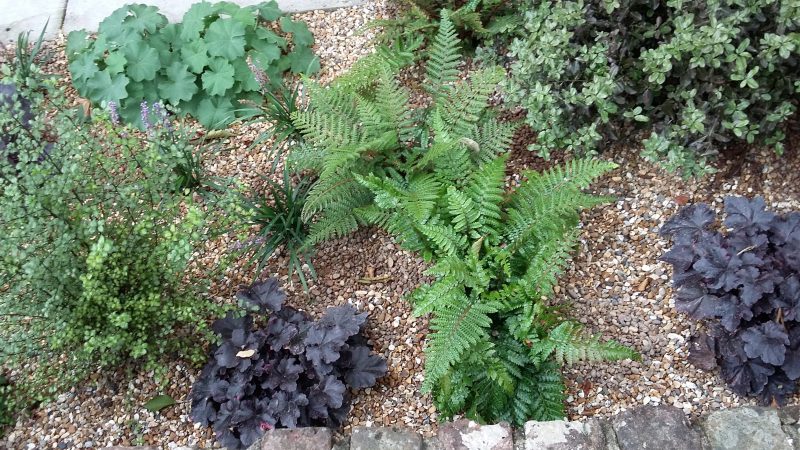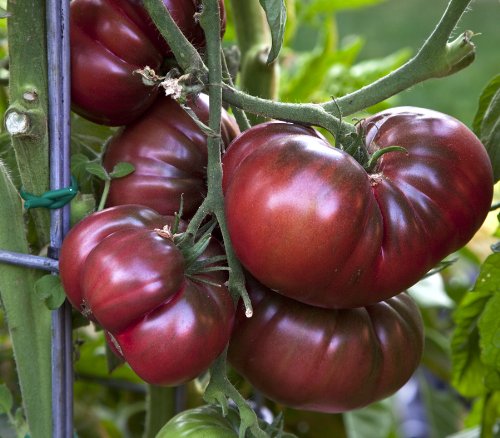BBC Gardeners’ World presenter, Flo Headlam, decided in 2012 to take up gardening as a second career.
After time spent as a dancer and 20 years working in charities, she started studying at Capel Manor College. Five years later, with general horticultural studies and garden design under her belt, she has found much fulfilment in designing and maintaining gardens.
Is there time for dance in the garden?
Yes there is, and drinking champagne as well! When I’m working, however, I’m not usually in the head-space to dance. I am inclined to sing or hum though.
Have you ever thought to combine your love of dance with garden design? Perhaps your own Cremorne Gardens dancing platform.
Funnily enough a friend mentioned that very same thought to me the other day. I’ve been thinking about doing a show garden or conceptual garden for Chelsea 2019. Dance could very well feature in it. I’m still at the ideas stage, but it’s definitely food for thought.
What are the key things you teach people about gardens?
- Patience. It’s certainly something I find myself saying to many of my clients. I’ve also reaped the benefit of just relaxing about a plant and watching what it does. I was rewarded after four fallow years with a beautiful display of flowers on a Campanula persicifolia. We’re so used to instant gratification. Nature teaches us patience.
- Watch what happens and how nature unfolds.
- Give it a go. If you don’t fail at something you might never learn that important lesson.
- Don’t be afraid to prune. Not heavily, but gradually, and see how a plant responds. Learn.
What makes Britain’s community gardens thrive?
There are some great examples of community gardens up and down the country. What community gardens do is bring people together. A shared loved of gardening is the starting point for many other initiatives born out of coming together to plant and nurture.
There are plenty of gardens where people grow food and take it home or share it with the community. Access to food is often an issue for many families. Growing and sharing is one way of helping to address this need.
Do you have a favourite community garden?
The garden near me is situated between two roads. It’s a piece of land that could have been developed as part of a cut through road. It’s a charming little walk-through garden that has been cultivated by local residents over the past 20 years, I believe. It’s quite rustic with a mix of shrubs and perennials, which are sometimes allowed to go over, adding to its charm. There are plenty of other visual treats adding to the art and craft nature of it: handmade seats hewn from tree trunks, donated furniture, rockeries, crockery, up-cycled odds and ends. Children, dogs, young and old are fond of it.
Two of my other favourite community gardens are St Mary’s Church Therapeutic Community Garden in London and Windmill Hill City Farm in Bristol.

Most memorable garden party.
Oh, I don’t have to think very hard about this one. It was for my best friend’s 50th birthday. She has an amazing garden that she had recently redesigned and planted herself. It’s lush, bursting at the seams with great plants. We decorated the garden with awnings, lights, rugs, cushions and seats. It was so atmospheric at night. We played music, guitar, percussion and sang until the early hours of the morning.
How do you gather creative inspiration for your garden designs?
I like to draw, doodle ideas. I spend a lot of time in my head, thinking about stuff.
Talking to clients is also really illuminating. Looking around their houses, seeing how they live inside gives me a very good idea about how they would want their outside space.
I take inspiration from art, design, architecture, clothes, fabric, patterns everywhere. Then I try to distill it into something simple. And usually low maintenance. Everyone wants a low maintenance garden. No one ever says, ‘Can I have a high maintenance garden please?’

Three artists in three words.
Anish Kapoor; bold, confrontational, thought-provoking.
Toni Morrison; chronicler, lyrical, pain-beauty-barrier-slayer.
Piet Oudolf; naturalistic, simplicity, earthy.
The garden which has transformed you the most.
Bury Court, Farnham. We visited in early September and I was blown away by the ‘beauty of brown’, to paraphrase Piet Oudolf, the softness being ushered in by the approach of autumn. There was the boldness of the herbaceous borders, especially the abundance of dahlias. I developed a new found respect and love of dahlias after that trip. But what stayed with me most was the simplicity of the lines, the intersection of different textures and materials and the relaxed ease of it all.
Your favourite vegetables or fruit to grow.
Tomatoes; I grew Black Russian this year. The taste was out of this world.
Chard; Easy to grow, delicious eaten raw or cooked, and keeps on giving.
Blueberries; Easy to grow, and after the strawberries have gone you know there’s still a fruit offering to come. Plus my girls have fun picking them.

Tomato ‘Black Russian’
Favourite garden of the world.
It may be a bit obvious but I love Kew Gardens. It never fails to excite and inspire me. The Palm House is forever delightful and I go away learning something new each time. And to be able walk around and know that you’re experiencing a piece of horticultural history and yet it still manages to embrace contemporary elements of art, sculpture, family fun experiences, learning and conservation.
Interview published October 2017.
